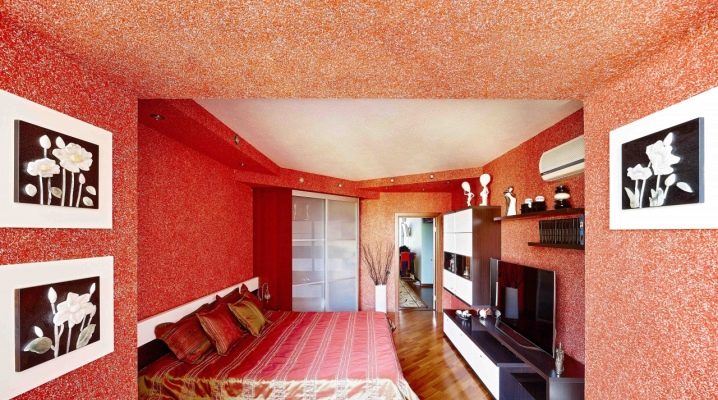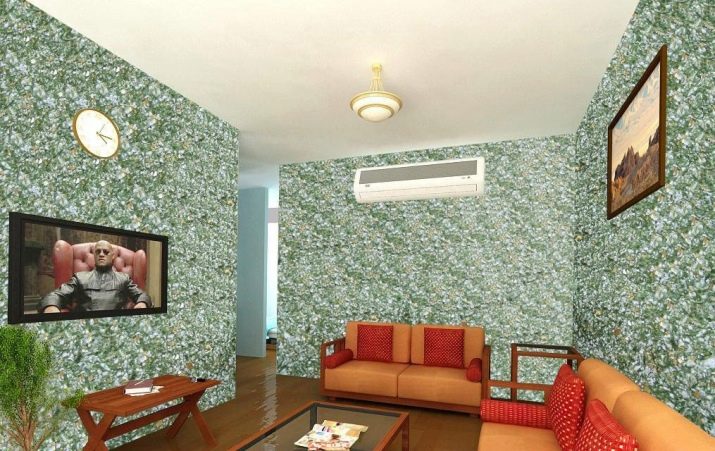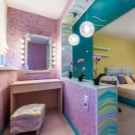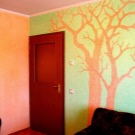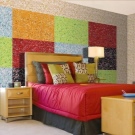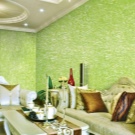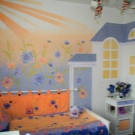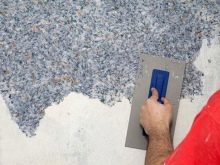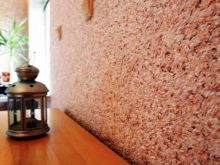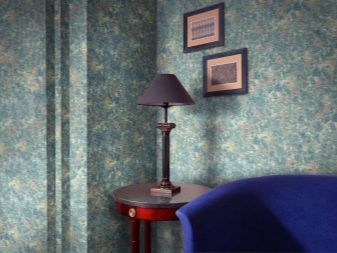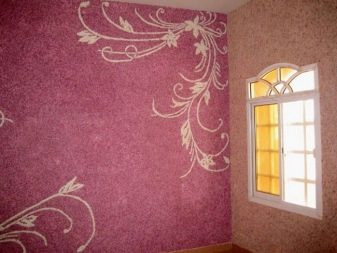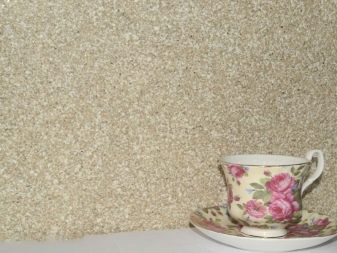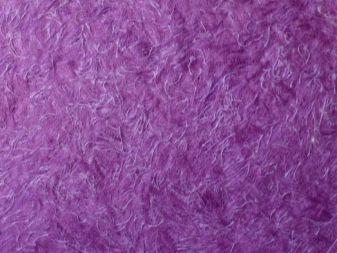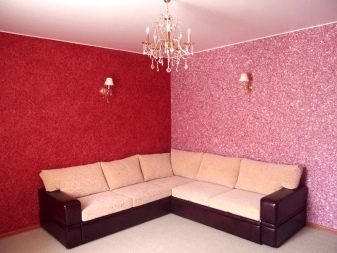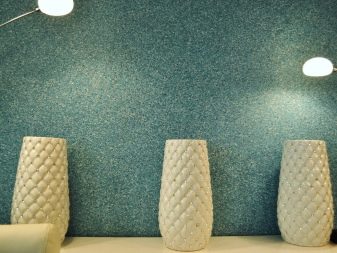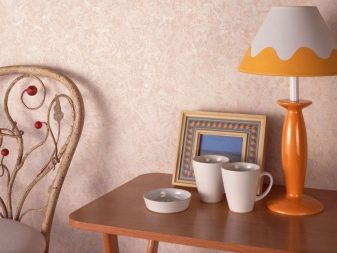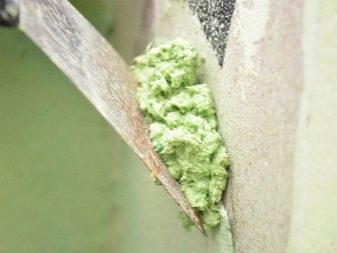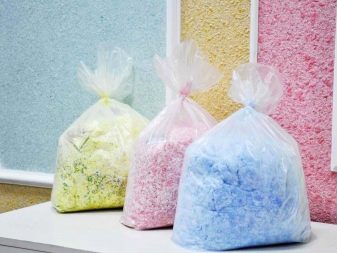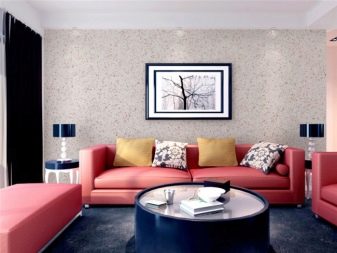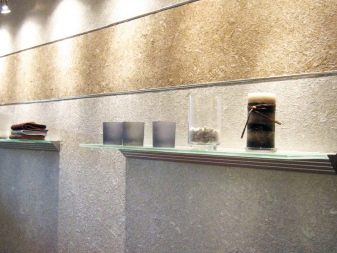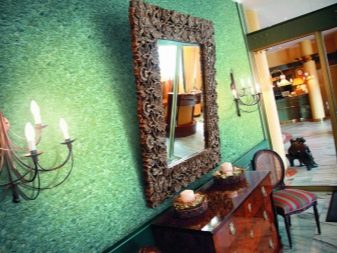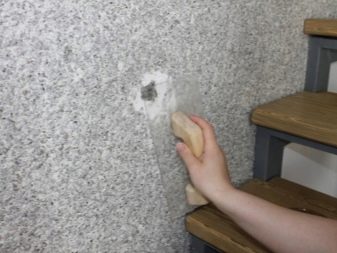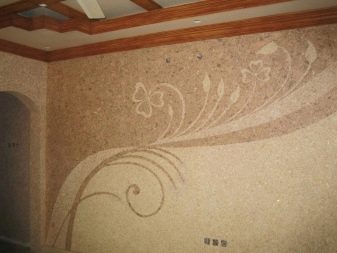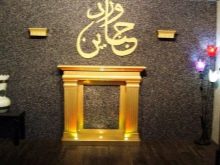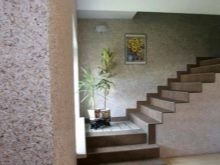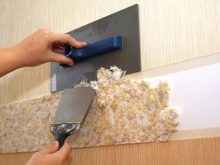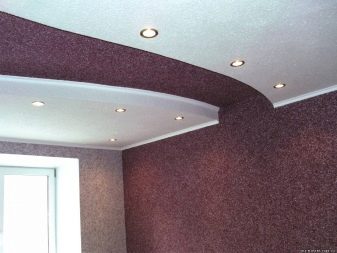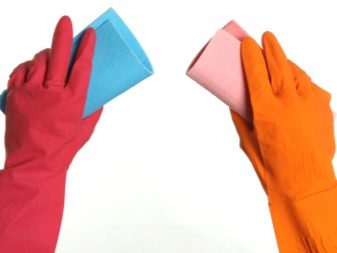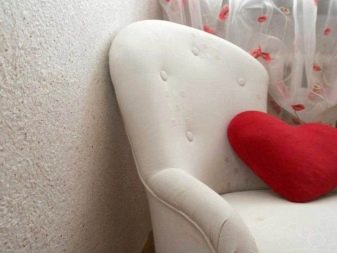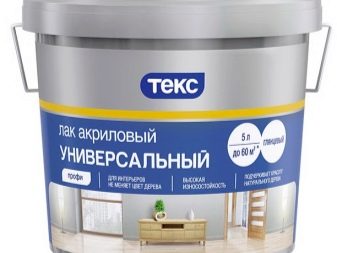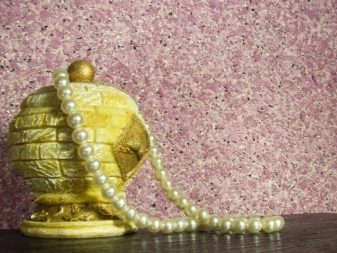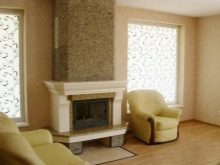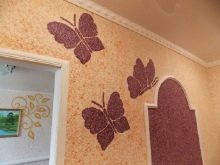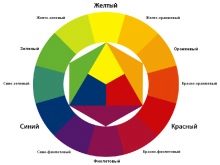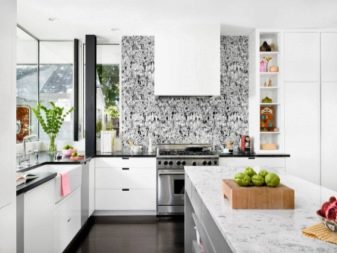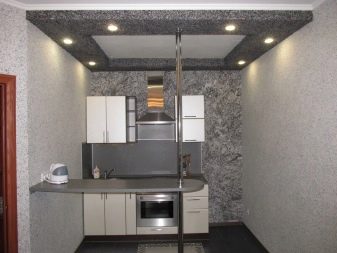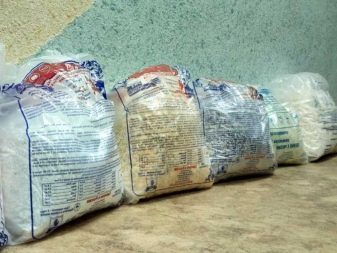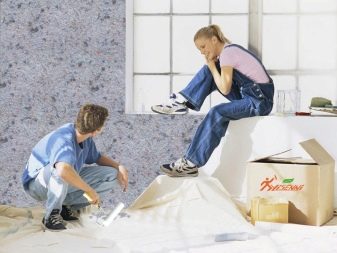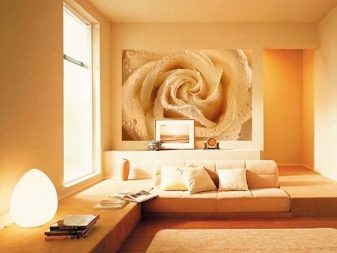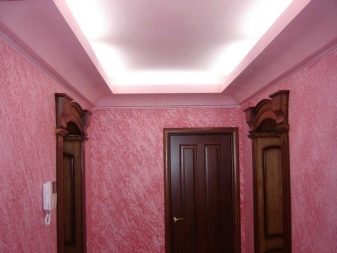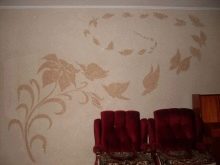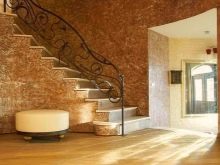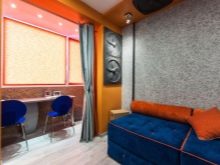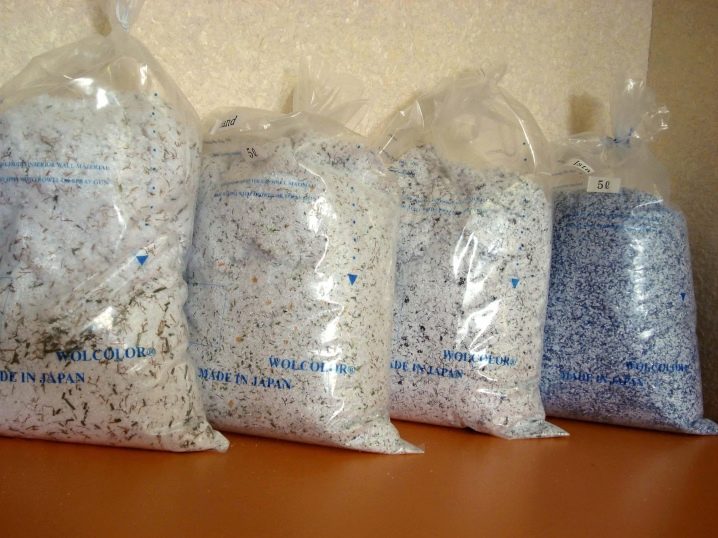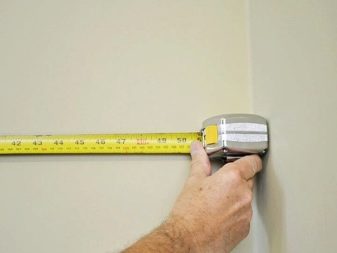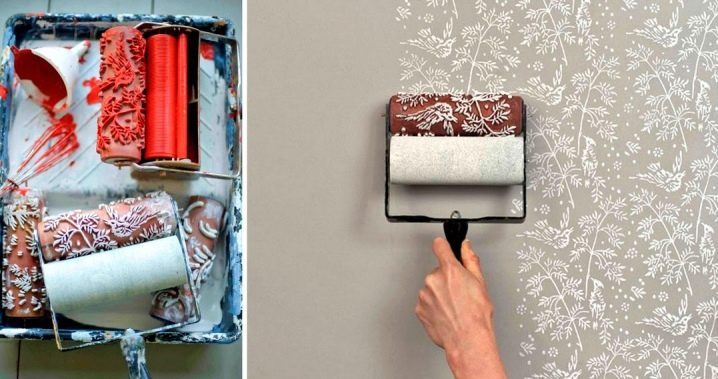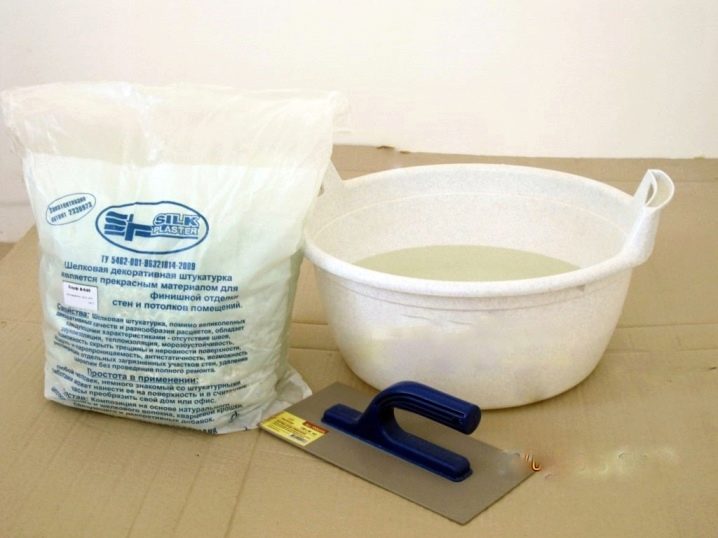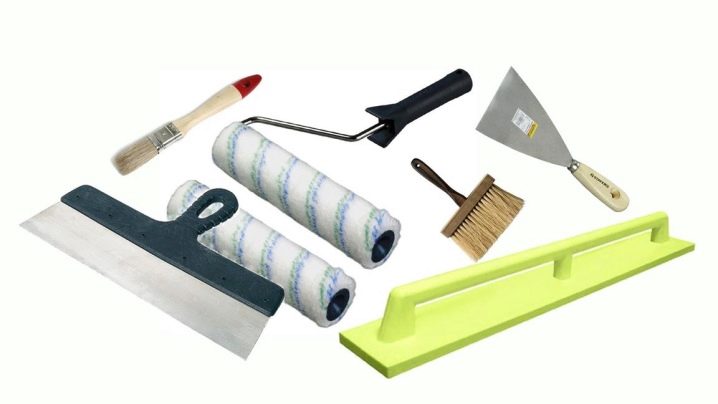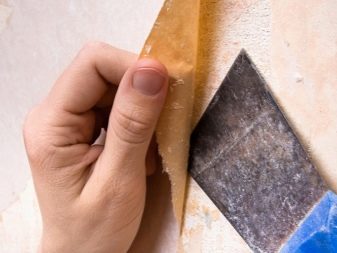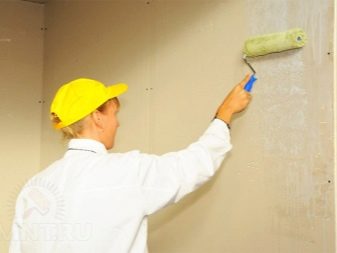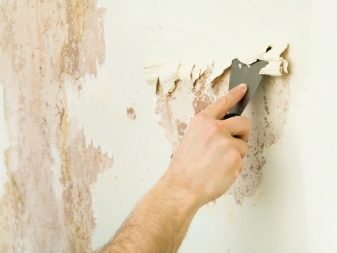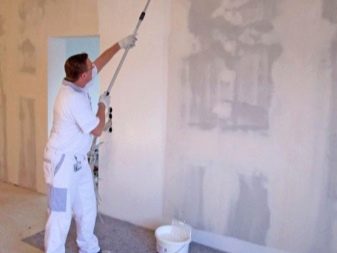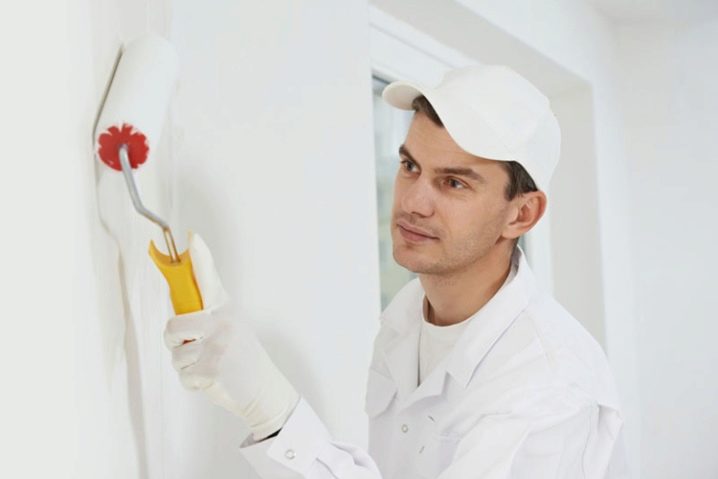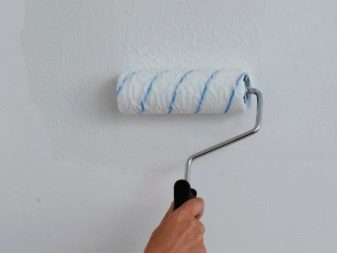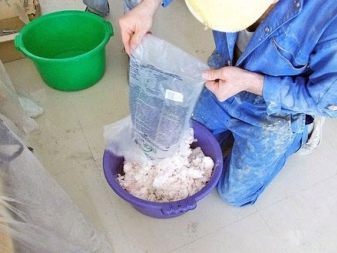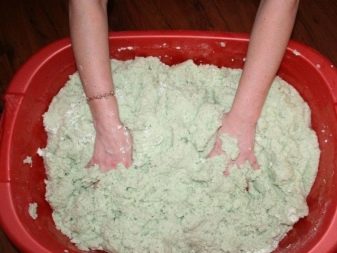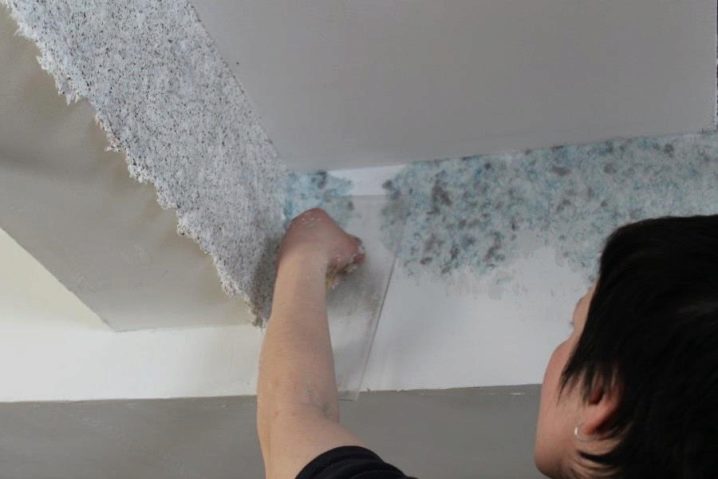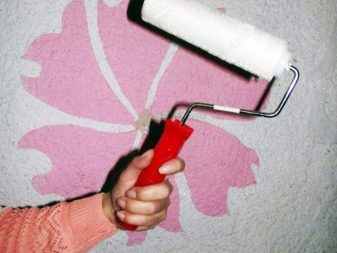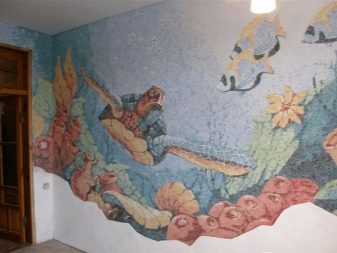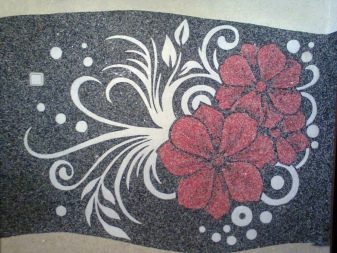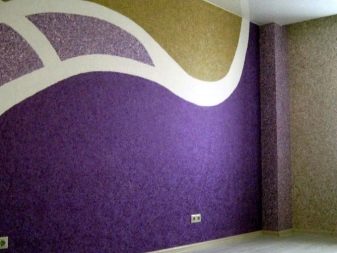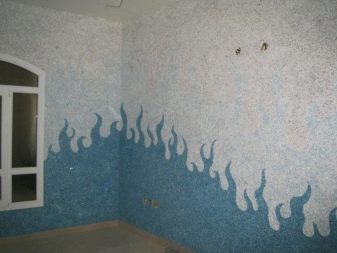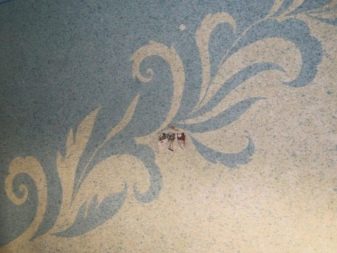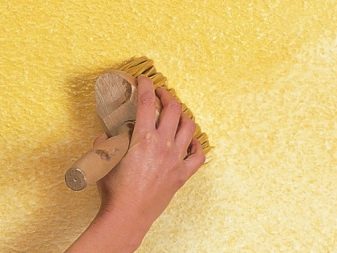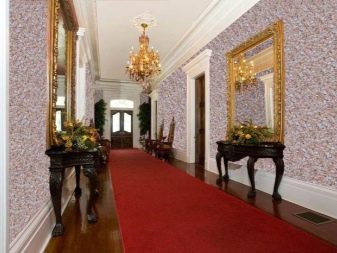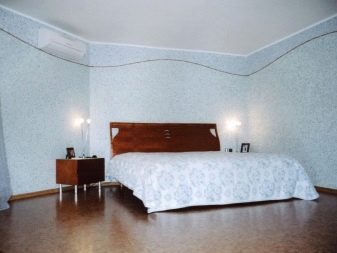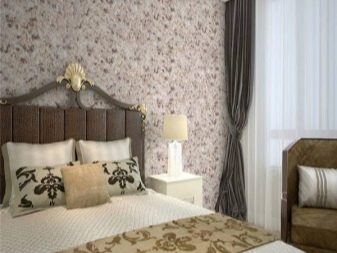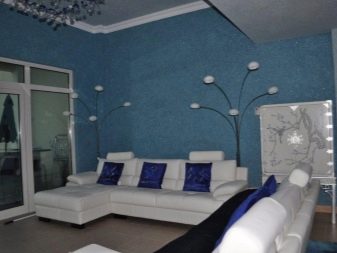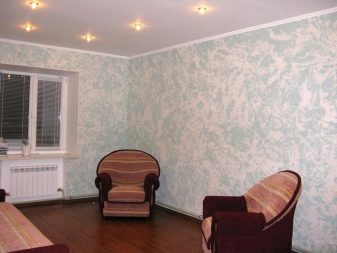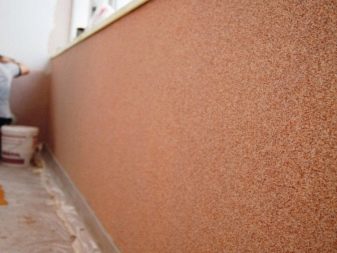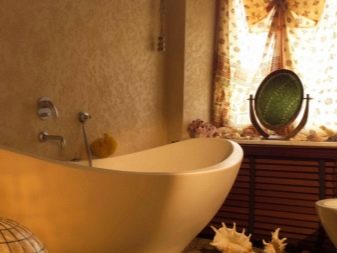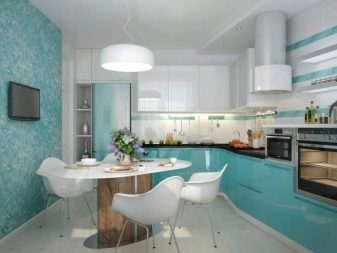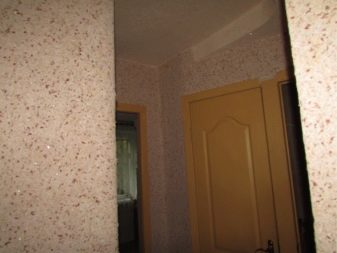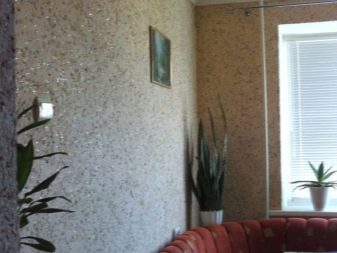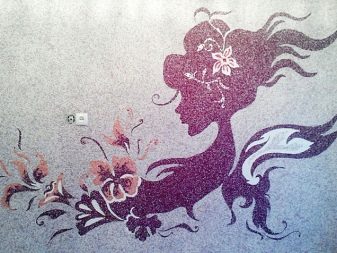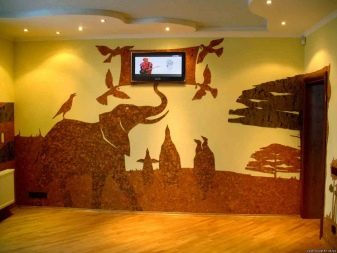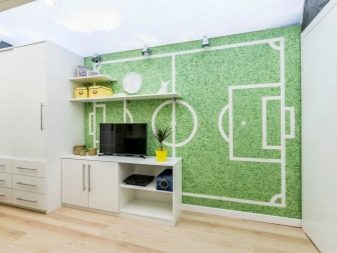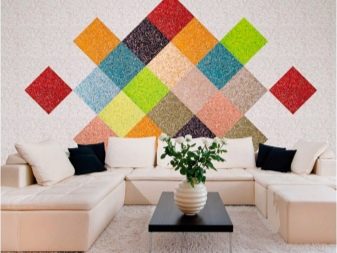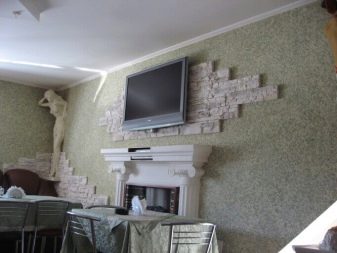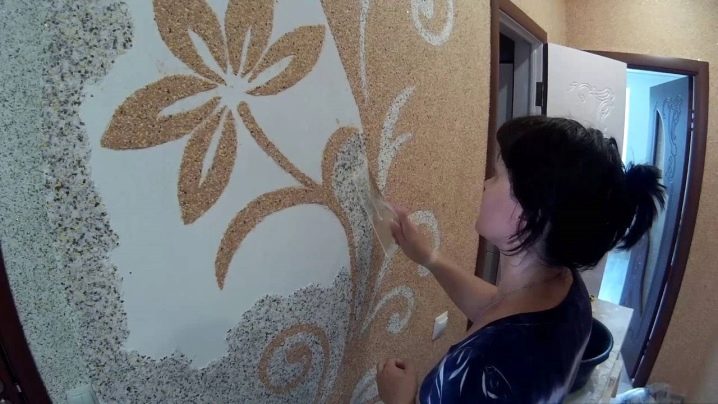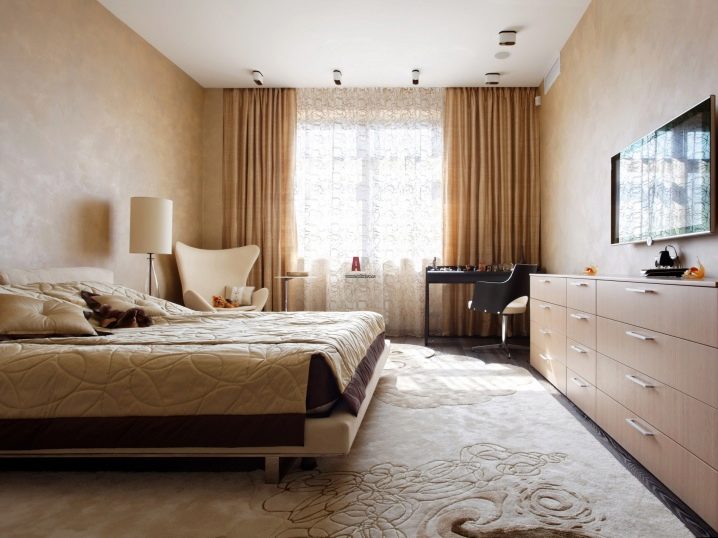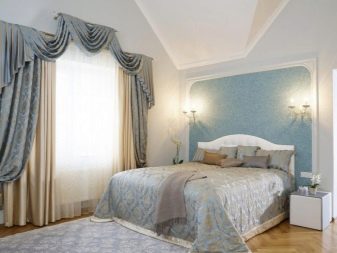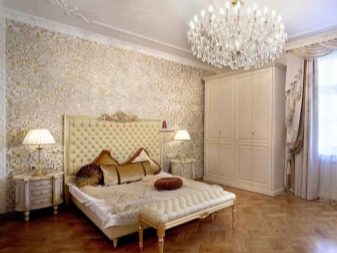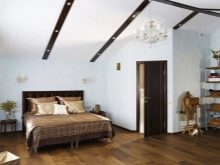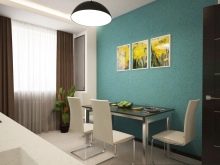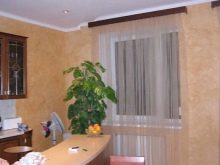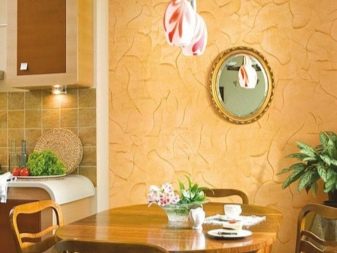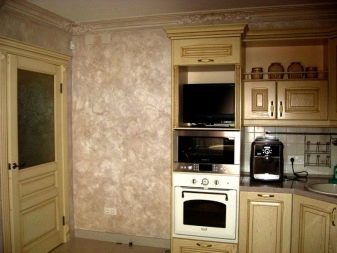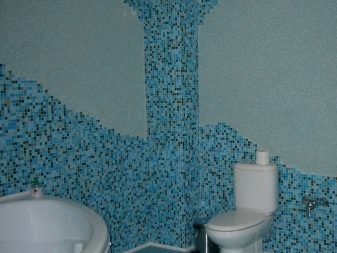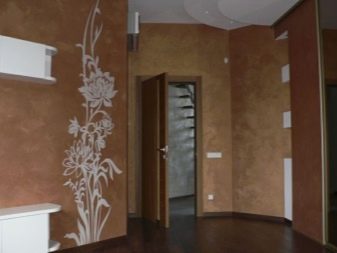Liquid wallpaper: advantages and disadvantages
Most people are used to doing repairs on their own. This makes it possible to create a unique design and embed a piece of your soul into the interior. Most often it is possible to finish the walls, change the wallpaper. An interesting material for such work will be liquid wallpaper. Creating an exclusive design with the help of interesting material will bring pleasure. Before starting, it is important to examine all the pros and cons, features of the work.
What it is?
Liquid wallpaper is an analogue of textured plaster. The composition is produced in the form of a dry mixture in a sealed package. This mixture is diluted with ordinary water. Less often they sell already wet liquid wallpapers.
To obtain a good and high-quality result, you must follow the instructions that are attached to the composition.
Such decorative plaster gives the walls a unique and elegant look.The walls look especially charming and unusual. Production of liquid wallpaper is debugged in such a way that you can easily combine different colors of the material. For particularly demanding customers, additional decorative additives are offered that diversify the appearance of the walls or ceiling.
What are the types?
The main criterion for the separation of liquid wallpaper types are components that are part of the mixture. The main types of material:
- Cellulose. The product of wood processing is the main component of such wallpaper. Paper, sawdust and the like used in the manufacture of the composition. The solution has a color ranging from white to brown.
With the help of the addition of certain dyes you can get a multi-colored mixture. So you can create the desired tone yourself, it all depends solely on your imagination.
- Silk. The main component are silk threads. This component gives the material a special pattern and refinement. Silk threads are not influenced by ultraviolet rays, which prolongs the life of the wallpaper. Bright colors do not change during use.
The main difference from the previous type is the possibility of additional decor. In such a composition, you can enter the flickering elements or any other decorative stuff. This addition will make the wallpaper start playing in a new way.
- Pulp and silk. Such materials are equally composed of yarn and wood processing products. Thus, the material combines the advantages of the above species.
Each type of wallpaper is good in its own way. It is important to understand that the difference in material affects how long a finish will last and how it will behave in unforeseen cases.
Properties and composition
Liquid wallpaper has two main components: silk and cellulose fibers, glue KMS. Also included are antiseptics and dyes, plasticizers. To prepare the finished mass, you need to add water to the powder. Fibers are products of processing of the relevant industries, in the case of cellulose, it can be newspapers and similar waste paper. In some cases glitter or other decorative elements are added to the composition.
Walls with such a coating have access to oxygen because liquid wallpapers have pores.Moreover, the coating tends to keep the heat inside the rooms and suppress extraneous noise. The liquid composition has a neutral electric charge. Due to this, dust does not accumulate on the surface, static electricity is not generated during friction. The material fully complies with fire safety requirements.
Pros and cons of use
Reviews show that people's opinions about liquid wallpaper differ because of personal preferences. Before buying such a finishing material, it is necessary to examine all the objective advantages and disadvantages.
It is worth noting such advantages:
- The surface of the walls is flat. No joints and seams - a nice bonus of liquid material.
- If you suffer from allergies - liquid wallpaper designed for you. They are completely safe and do not emit toxins during use.
- On occasion, the walls can be leveled with a finishing material.
- The composition will be a real salvation for regulating the optimum humidity of the room. Breathable moisture-resistant mixtures let in steam.
- Do not create problems when covering surfaces of different curvature and complexity.
- In case of unexpected damage, you can restore the coating.A minor scratch can be simply moistened with water and smoothed. In case of major damage or color change, remove the material in the right place and apply a new layer.
- The coating of liquid wallpaper improves thermal and sound insulation of the room.
- If there is a flood in the house, the covering will remain on the walls. After wetting the wall can not be touched, so as not to accidentally remove the mass from the wall. After drying, the wallpaper will look like before.
- If desired, the composition can be removed from the walls, diluted with water and cover the walls again.
- High maintainability will please pet owners. Any scratch can simply wipe.
- Interesting texture of the wallpaper makes it possible to create an interesting design.
Disadvantages of coating from liquid wallpaper:
- Pulp wallpaper fade in the sun. They should not be used in rooms on the south side.
- Wallpapers carry only dry cleaning. They can be vacuumed or wiped with a soft brush.
- Old or stubborn stains of dirt, fat can not be removed. The only option is to remove part of the coating and apply a patch.
- Not any base is suitable for applying a liquid composition. Easy to work with a rough wall. A smooth surface does not fit, the wallpaper will drain.
- For high-quality coating, it is necessary to prepare the surface in a special way. It is important to take into account the roughness of the wall, and its original color.
- For self-repair will take quite a lot of time, especially for beginners.
As you can see, there are few significant flaws. A large list of benefits smooths them. If you are upset by the impossibility of wet cleaning - there is a solution. You can apply varnish on liquid wallpaper, then the surface will repel water.
Note that in this case you will not be able to restore the surface if desired. Moreover, vapor permeability will disappear and the walls will not breathe.
Color palette and combination
Liquid wallpaper suitable for walls and even the ceiling. A large range of colors and a variety of textures attract buyers. A wide variety of colors allows you to choose the desired shade and even create a coating in the style of a gradient. So, your walls can be plain or combine several colors.
For the selection of the design of the room, experts advise using the “wheel of flowers”. This method will help to cope with the task at the highest level, even a beginner.
So, designers are calling to use colors that are on opposite sides of a circle to create contrasts. For similar tones, combine adjacent colors.
To create a business environment in the workroom, it is recommended to use beige, white or gray colors of liquid wallpaper. Any coating can be varied with additional decorative elements.
You can add to the mixture of gold thread. The office will look more presentable.
Dark color wallpaper may be an interesting option for the design of the working part of the kitchen. On the surface of this color various contaminants will be less noticeable, which means that the restoration can be carried out less frequently. Red and black tones will help create an interesting and modern ensemble.
Many manufacturers offer consumers ready-made interesting ensembles. The composition may include cellulose, silk and cotton fibers with various dyes and decorative chips. Such mixtures can be sold in one package with the combined components or in the form of several packages with separate components.
In the second version, there is always an instruction for mixing the components - be sure to follow it.In most cases, in the annotation you will find recommendations for combining the selected products with other colors.
Often, the pastel colors of liquid wallpaper act as additions to the interior. So the basis for the composition can be wallpaper on the main, the most prominent wall. The remaining zones can be arranged with a suitable liquid composition.
Liquid wallpaper can be both matte and glossy. More precisely, in its standard form, the wallpaper becomes matte after drying. To create gloss use a special varnish. You can cover them with any composition and it will sparkle with shine.
It is important to remember that adding varnish does change the characteristics of the coating.
A variety of textures and colors in the range of liquid wallpaper allows you to create a unique visual effect, to convey the volume and depth of the image. Changing the direction of movement can also vary the texture. With the help of liquid wallpaper, you can create whole works of art on the walls.
Coverage Features
Applying liquid wallpaper is significantly different from gluing the materials we are familiar with. First you need to make a calculation and find out how much the mixture will need.
It is recommended to buy a little more material.So you insure yourself in case of unforeseen situations during the repair and leave a reserve in case of restoration.
Experts say that when applying wallpaper with a spatula, about 300 g of dry mixture per 1 square meter will be needed. m. So, for calculations it is necessary to measure the height and width of walls, window and door openings.
Further calculation takes place as follows:
- To calculate the area of elements, multiply the width and length. So find out the size of the walls, windows, doors and areas that will not be decorated (if any).
- Fold the area of all the walls.
- From the resulting number, subtract the total area of the windows, doors and empty zones.
When calculating, one should take into account not only the area, but also additional factors. Much depends on the condition of the walls and the tool you are using. Consider also a certain stock of wallpaper and your experience in such work. Beginners need a little more material than professionals.
You can determine the desired thickness of the layer by eye. The optimal amount of mass is simply determined - no wall should be visible through the coating. If the color of the wallpaper is saturated - you will need a layer of smaller thickness. If the tone of the wallpaper is softer, more material may be needed.
For manual application of the liquid composition will need such tools:
- For the preparation of materials will need a bucket of 12 or more liters.
- Spatula for liquid wallpaper. Such tool differs in special smoothness and is made of a stainless steel or plexiglas.
- Trowel or gun. Such tool serves as alternative to the spatula.
- Transparent grater for leveling the finished coating.
- Roller for priming.
- For putty walls need spatulas of different sizes.
- Spray gun for formulations that simply cannot be applied with hand tools.
Surface preparation
First you need to carefully remove the previous coverage. Wallpaper should be removed completely. If the old paint began to bubble, then it also needs to be removed. Now you need to align the visible defects.
Smooth walls should be primed.
Its use has a positive effect on the characteristics of liquid wallpaper:
- The color of the coating does not change.
- Strength is improved.
- Significantly increase the performance of noise and thermal insulation.
- Low moisture absorption.
Special features of priming depend on the chosen surface:
- DrywallThe entire surface should be primed because the seams absorb more moisture than the sheets themselves. Cover the plasterboard walls with a primer at least 2-3 times.
- Painting. Applying a primer depends on the thickness of the paint layer and the material under it. If the paint is applied to all requirements, then it is not necessary to prime at all. For a good effect, apply liquid wallpaper within 24 hours after priming.
- Whitewash. Remove the material and apply a quality primer to the wall.
- Chipboard. Such a wall initially absorbs moisture unevenly. Apply about 3 coats of primer.
- Tree. Even a high quality array needs to be primed. This is due to the specific structure of the wood.
- Concrete. Strong concrete surface should always be treated with a primer before applying liquid wallpaper.
- Oil paint. If the paint is applied in a rather thick layer, then the walls should not be primed.
- Plywood. To primer plywood sheets need about 3 times.
The best way to handle the wall immediately before applying the liquid wallpaper - plaster. It is on the rough surface that the finishing material is better applied. It is desirable that the primer solution had the same effect.
You can make the mixture yourself - connect 2 parts of the water emulsion with 1 part of PVA glue. You can buy a ready-made composition, but it is much more expensive.
If even after the primer the wall has an uneven tone, then it is necessary to paint it. Otherwise, the base will shine through the liquid wallpaper.
Perfect smooth color is not needed, the main thing is to remove contrasts. For staining the usual white water-based paint is suitable.
All metal fragments from the wall should be removed. If this is not possible, then the metal should be painted to match the base with water-repellent paint. If we ignore this rule, the metal will rust in the process of drying the wallpaper and corrosion will tune out with an ugly stain.
Preparation of the solution
Liquid wallpaper sold in the form of dry mixes. To make the solution, you need to mix the dry component with water. Water consumption depends on many factors and is always indicated in the instructions. Pour the contents of the bag into a bucket, add water and mix until smooth. The finished mixture resembles minced meat.
You can mix everything with your hands, there are no harmful substances in the composition. Put the prepared mass back into the bag, spin it and leave to rest for 5-12 hours.So you give time to the mass equally soak in water. During drying the wet mass becomes lighter, it must be taken into account.
Experts recommend to prepare at once all the mixture that will be needed to finish the room. If you do the work in parts, it will be noticeable boundaries. This does not threaten when applying pastel colors, but may occur when using rich, bright wallpaper.
Drawing
For the finishing work will need a new trowel. It is better to choose a tool with a working surface of transparent plastic, it will simplify the task.
Process description:
- Apply the swollen compound to the wall in a convenient amount.
- Spread in circular motions on the wall.
- Put the next batch and continue.
Cover the wall completely in one go. If for some reason this did not work out, then before continuing the work, sprinkle the joint well with water and wait about 25 minutes. For corners it is better to choose an angular spatula. So work will be done better and faster. Apply a mass on both sides of the corner, run a spatula, and stretch the excess on the walls in different directions.
Some experts suggest using a different method of applying the composition - a roller. Go to his choice responsibly. It is important that the nap is short, hard and grouped. Tool width - 15 cm.
Job Description:
- Apply with a spatula composition on the wall. Thickness does not matter.
- Roll the composition on the wall using a roller.
- Apply the next batch and roll again.
This tool helps to maintain the same layer thickness. The finished surface will be more textured and rough.
If desired, a special pattern can be applied to the surface. For this special stencils are used.
Proper drying
High-quality finish will delight you with its appearance for many years only if all the rules of drying are observed. Violation of technology can spoil the surface and not leave a chance for recovery.
Factors that affect the drying time of liquid wallpaper:
- The quality of the finishing work.
- The amount of water in the mass, the thickness of the layer of liquid wallpaper.
- Temperature and humidity in the room.
- The presence of drafts or ventilation in the room.
So, liquid wallpaper dry from 1 to 5 days.During the first 24 hours, most of the liquid evaporates. You can check the status of the wallpaper in this way - touch the surface with your hand.
It is important that the palm is not stuck to the wall. Accelerate the drying is not necessary, the coating will begin to peel and deform.
Liquid wallpaper can be divided into several types:
- Materials with cellulose and cotton fibers dry faster than anyone. It is important to know that they are most sensitive to drafts.
- Polymer additives increase the drying time, but they provide resistance to cold air masses.
- If the wallpaper contains additives from metals or minerals, then the drying will last again. Such a coating requires uniform heating of all walls, but after drying it will please with its strength.
Thus, the drying time may increase to 2-3 weeks. Ventilate the room should be evenly, avoiding drafts. Make sure that the air temperature fluctuates between 25-27 degrees.
After drying, additional treatment may be necessary. Often the surface with dried wallpaper is covered with a special transparent varnish. This increases the lifetime.
Particularly relevant is the finish for the hallway, where the walls are often smeared.
How to apply liquid wallpaper on the wall, see the following video.
Care
Proper care at home will significantly increase the life of the finish. Such wallpaper should be vacuumed or wiped with a dry soft brush.
You can wash the wallpaper only with a layer of varnish. In the classic version, the coating does not tolerate water.
The use of decorative trim will bring you joy with proper care. If necessary, you can restore the surface. Using a sharp spatula and water, remove the damaged fragment. Now again apply a layer of wallpaper to its original place.
Where are they used?
Decorating the walls with liquid wallpaper is found in many modern houses and apartments. The use of material is universal, because you can cover the walls and the ceiling. Interior bedrooms often complement such an interesting finishing material.
Choosing a hypoallergenic cover for a rest room is pretty simple. Color depends on the overall style and personal preferences of the owners. This coating creates a special comfort and warm atmosphere.Romantic atmosphere can be created using wallpaper with sparkles.
Living room and a room with liquid wallpaper will be the real pride of the owners of the house. In such a room is nice to meet guests. Any dinner will be festive and special if you are surrounded by exquisite velvety walls.
Liquid wallpaper can decorate not only rooms, but also a balcony. A loggia with such decoration will be a real place to relax.
Choose those types of wallpaper that are not sensitive to drafts and temperature changes. If the balcony is quite wet, then varnish liquid wallpaper.
The use of liquid wallpaper in the bathroom, in the toilet, in the kitchen - freedom for fantasy. Textured mass makes it possible to divide the room into functional zones. Moreover, the material can be combined with others, even with tiles.
Design options
With the help of liquid wallpaper you can create a unique design and turn your walls into a real work of art. If you want your walls to play in a new way, then sparkles will help you. The canvas will play in the light and delight the household. A variety of additional decor will help decorate the decor.
The color and texture of the wallpaper depends solely on your preference.In the modern market the wide range is presented. With the help of many types of liquid wallpaper, you can create a special relief. You can create various patterns and drawings even without artistic skills - stencils will help you.
Liquid wallpaper make it possible to paint landscapes and create real pictures.
Vertical stripes can visually make the walls higher, but horizontal ones are perfect for rooms with high ceilings. Choose light colors for small rooms. Brighter and more saturated wallpapers look great in large and spacious rooms. If you want to create something interesting - decorate one wall with patterns or a full picture.
With the help of liquid wallpaper you can give any room a festive and rich look. To do this, choose a liquid wallpaper with the addition of specially processed silk fibers. Thin golden silk threads look great in halls and living rooms. For lovers of modern styles there is a special option - you can cover the walls with spots of different colors.
The image on the walls can be created in several ways. You can spray or apply the desired pattern with a spatula manually or with a stencil.Another method is volumetric application. This is possible due to the special structure and relief of liquid wallpaper. The main thing is to follow the direction of the fibers.
Examples in the interior
With the help of liquid wallpaper ordinary apartment will turn into a citadel of holiday and comfort. Design ideas will give you inspiration and help you decide.
The most intimate room of any home is the bedroom. It is here that we can distance ourselves from the whole outside world and plunge into a special situation.
The main factor in determining the color of the finish in the bedroom is the style of the interior. The styles of decoration are combined with the finishing coating:
- Antique, Baroque, Renaissance and Empire. Decorating a room in these styles requires a lot of money for furniture and accompanying decor. But with the wall covering everything is much easier. Pick gold threads to give the surface a rich look and special charm. Antique style and does not require additives, just pick up the composition of the desired color.
- Classical. Liquid wallpaper in a classic interior look very useful. Due to the flexibility of design, you can choose as a composition with additives, and concise monophonic.
- Hi-tech, techno and minimalism. These styles combine simplicity and clarity of lines. Liquid wallpaper will help you in this case. You can dilute the interior with various textures and reliefs, bring freshness into it.
- Ecostyle. The presented material is great for wall decoration in an ecological style. Liquid wallpapers themselves are natural and do not cause allergies.
- Ethno-style. A rich selection of colors allows you to roam the fantasy. With the help of liquid wallpaper you can easily build panels and special drawings in ethnic style.
The interior of the kitchen can be either decorated or supplemented with liquid wallpaper. So, many housewives divide the kitchen into a work area and an area for eating. The first is made out of tiles, which is easy to wash in the process of cooking. The second is made with the help of liquid wallpaper, which create additional comfort. When choosing a wallpaper, start from the general style of the room:
- For classic cuisine pick pastel wallpaper.
- Plain liquid wallpaper for the kitchen in the style of a loft - perfect.
- Wood kitchen in country style will create an excellent and cozy composition with a soft wall covering.
- Metal surfaces, strict lines and plain liquid wallpaper - the perfect kitchen in the style of high-tech.
- Textured wallpaper calm tones will make the kitchen in the style of Provence even more romantic and delicate.
- If your kitchen is decorated in retrostyle, then liquid wallpaper in the same tone will perfectly support the overall atmosphere.
- If you can’t opt for something specific, try eclecticism. Here the final choice of colors and textures depends only on your wishes.
Liquid wallpaper with cellulose will decorate your bathroom. Divide the room into zones using a combination of contrasting tones. An interesting option - the design of one wall in the form of the underwater world with textured fish. The areas near the sink and bathroom can be tiled, and the rest of the room can be decorated to your liking.
For decorating the hallway is better to cover the liquid wallpaper with a special transparent varnish. So the coating will find a special strength, and you will have a great opportunity to perform wet cleaning at will. Liquid wallpaper at the entrance will give the apartment a modern look and will delight you. The use of additional decor will give the situation a special charm.
